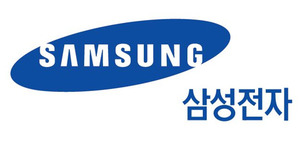Posted on : Jan.14,2019 17:33 KST
Modified on : Jan.14,2019 17:56 KST
Analysts say sluggish performance more serious than semiconductors
Samsung Electronics and LG Electronics are suffering serious slumps in their smartphone sectors. While LG’s struggles have continued for the past three years or so, Samsung’s performance has plummeted in the past year. Some analysts are suggesting the slump for smartphones could be worse than the one recently plaguing semiconductors.
Fourth quarter performance figures released on Jan. 8 showed operating profits for Samsung Electronics and LG Economics down 30% and 70% respectively from the same period in 2017. In both cases, one of the main reasons for the slide was underperformance in the smartphone sector.
On Jan. 13, Samsung Electronics took the unusual step of releasing a statement “explaining” its slack performance.
“Smartphone sales have stagnated amid a slowdown in market growth and intensifying competition, while profits have decreased due to a rise in peak season promotion and other marketing costs,” it said.
 |
|
Smartphone sales for Samsung and LG
|
The claim is that profits fell amid an increase in marketing spending to shore up the dwindling demand. Samsung Electronics recorded 22–23 trillion won (US$19.67-20.57 billion) in smartphone sector sales for the fourth quarter of 2018, which was around 5% less than the same quarter in 2017 – but its estimated operating profits of 1.2–1.7 trillion won (US$1.07-1.52 billion) were down 30–40% from that quarter.
The situation for LG Electronics is even direr. The smartphone sector has been losing money for 15 straight quarters since 2015. After dropping below 200 billion won (US$178.1 million) in the first quarter of 2018, quarterly losses were estimated to have once again exceeded 300 billion won (US$267.12 million) in the fourth quarter. Sales were estimated to have dropped below 2 trillion won (US$1.78 billino) in the fourth quarter from their previous levels just above that mark. The sharp increase in losses appears to have been a factor in the company’s decision late last year to replace smartphone president Hwang Jung-hwan after less than a year in his position.
More competition from Chinese rivals, less demand
The main issue with the smartphone slump is that it is rooted in structural factors, including a decline in demand for new smartphones and the rise of Huawei and other Chinese competitors – which makes a rebound appear unlikely. Global smartphone sales figures compiled by Strategy Analytics showed shipments of 1.44 billion smartphones last year, a decrease of around 5% from 1.58 billion in 2017. It was the first example of negative growth since the arrival of smartphones.
While demand has fallen, competition has intensified. As of the third quarter of 2018, Samsung Electronics held the largest share of the global smartphone market at 19%, followed by Huawei in second place (14%) and Apple in third (12%). In close pursuit behind them were a crop of Chinese companies including Xiaomi (9%), Oppo (9%), and Vivo (8%). The situation is one where Samsung Electronics has lost its overwhelming lead and is now battling with several rivals for a shrinking piece of the pie. Chinese companies have also experienced rapid growth in the premium smartphone market once shared exclusively by Samsung Electronics and Apple. Samsung Electronics and Huawei are in close competition on the launch of folder phones; the first display smartphones with screens covering the entire surface were released last year by Oppo and other companies.
For this reason, many observers are claiming the smartphone slump is more serious than the one affecting semiconductors.
“While semiconductors may be underperforming now, the competition is less intense and they could experience a rebound at any time,” said an electronics industry source.
“Smartphones are different. It’s enough of a red ocean that even Apple is struggling, and China is coming on so strong that even Samsung can’t rest easy, let alone LG.”
Samsung Electronics’ current plan is to defend its market share by expanding its budget lineup while turning its situation around with new folder phone and 5G items. The company has broadened its lineup of low-end phones specialized for different regions, including its December launch of the mid-priced Galaxy A8s with all-screen display for the Chinese market. It also plans to launch a folder phone in the first half of 2019 and present smartphones with new forms and functions, including a 5G phone in the first quarter.
LG Electronics has also been doing its utmost to turn its struggles around. Recently, it released the LG Q9, a budget phone with premium performance at a price range of just over 490,000 won (US$438.23). Viewing the shift in global mobile communications generations in South Korea, the US, and Europe as representing a greater opportunity than folder phones, the company plans to take its chances with 5G.
But it looks to be a tough battle. The budget smartphone market is one where Chinese companies – including Xiaomi and Oppo as well as Huawei – are highly competitive. And with the folder phones and 5G phones still in their earliest stages this year, they are unlikely to yield major results right away.
“Mobile phone demand is declining. We are the first ones experiencing that,” said LG Electronics Vice chairman Jo Seoung-jin on Jan. 8 at the CES roundtable in Las Vegas.
“[A recovery] will take two to three years, and we’re currently in year two,” he added, indicating that the market conditions remain poor.
By Choi Hyun-june, staff reporter
Please direct comments or questions to [english@hani.co.kr]












